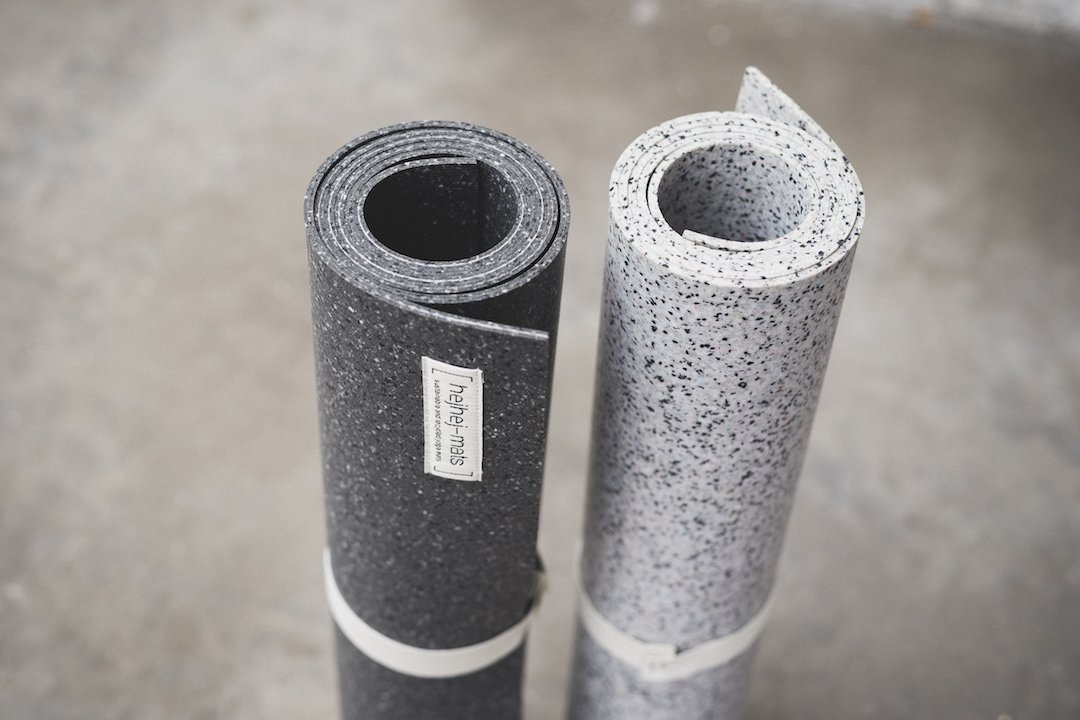Sustainable & Recycled Yoga Mats by HejHej
Sustainability in gyms and yoga studios
There is a marked difference between the adoption of sustainable design principles between the world of gyms and that of yoga studios.
While the former tends to collectively hold up its hands to say, ‘there are no options available for sustainable gym equipment, so it’s not our fault’, the latter often has a more planet-friendly value-system built into its DNA and a far easier time finding sustainable yoga equipment too.
The result is a clear division, with gyms falling way behind in the shift to more eco-friendly operating models. In short, there is plenty of white space here for progressive fitness equipment brands with the vision to start the transition early.
SUSTAINABLE GYM EQUIPMENT
The number of purportedly sustainable gym equipment brands can be counted on one hand, the likes of Eleiko and Casall in Sweden, WaterRower / Nohrd in the US and Germany, followed by SportsArt in the US.
Each however has adopted a different approach to sustainability and, I think they would admit themselves, they all still have a long way to go in reducing their impact on the planet whilst also adjusting their manufacturing raw materials to make us of healthier, non-toxic materials than can be recycled, reused or repurposed at the end of their life instead of ending up in landfill.
SportsArt for example focus on reducing the energy expenditure of cardio gym equipment by harnessing the kinetic energy of spin bikes and contributing this back onto the grid, they do so with a seeming disregard for issues such as Circular Design, single use plastic, sustainable design and so on.
ECO YOGA MATS BY HEJHEJ
HeyHej are a young brand based in Germany that set themselves the target of going one step further than most sustainable yoga mat producers by creating a closed-loop product, using materials that are naturally abundant and completely recyclable at the end of their life. Have you ever wondered what happens to those bright blue, purple and green mats in your local gym when they are worn out? They end up in landfill.
WHAT IS THE CIRCULAR ECONOMY?
Circular Economy principles dictate that a product should be designed for a complete reintegration into the ‘loop’ of production cycles, going in for another round incarnated as a new product in other words, and so on ad infinitum. This reduces the draw down on natural resources and prevents creating additional waste.
Circular Design Yoga Mat
In this case, HejHej use plastic off-cuts 95% of which come from Germany where they are based, use plastic-free packaging, ship with climate-neutral Go Green shipping by DHL and donate to the NGO Earth Child Project in South Africa with every mat sold. At the end of the mats life, the owner simply emails HejHej who send out a return shipping label and then reuse the mat in their production cycle again.
The yoga mat bags are made of 100% recycled PET, the zipper is made of recycled nylon and a tree planted for every bag sold. These are small details but collectively they add up to a meaningful story that shows this is a company with a value system running through they DNA, at least while they are still small every touchpoint can align with this vision. The challenge may come as they grow and scale up..
TESTING THE SUSTAINABLE HEJHEJ yoga MAT
We have had a mat at home for a few weeks now. It’s suitably grippy, hardwearing and has a (teutonic) tough feel to it - meaning we’ve been able to specify it for several new resort gym projects in Greece where it will be used more as a gym mat than for yoga specifically, i.e. by guests wearing trainers rather than barefoot. Never an easy transition for a yoga mat but the HejHej mat can handle it and, what’s more, is easy to wipe clean so will be well placed to resist regular usage, cleaning and so on.
Our mat is the long version, so it’s a general size suitable for an adult male. The dark grey colour is speckled with various shades of grey, with the occasion fleck of white and turquoise blue, all in all it adds up to a smart looking mat that can easily be left on display in a corner of an apartment without causing offense.
It is perhaps not the thickest of yoga mats, some may prefer to opt for a more spongey option that protects their knees in certain yoga poses but this is a minor gripe and from our perspective as gym and yoga studio designers, not a problem as those clients will typically have their own mat with them anyway.
All in all, this is a meaningful addition to the sustainable gym equipment offer and yet another sign that the yoga equipment market is leading the way for gym equipment manufacturers to follow. Well done to HejHej founders Anna and Sophie!

